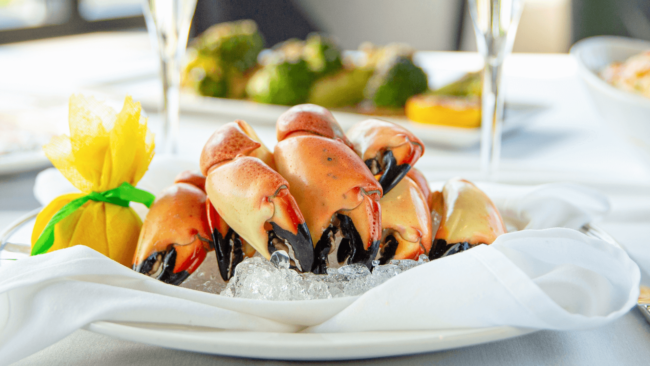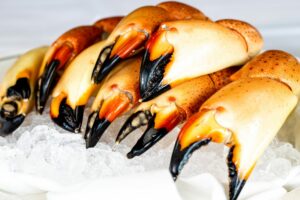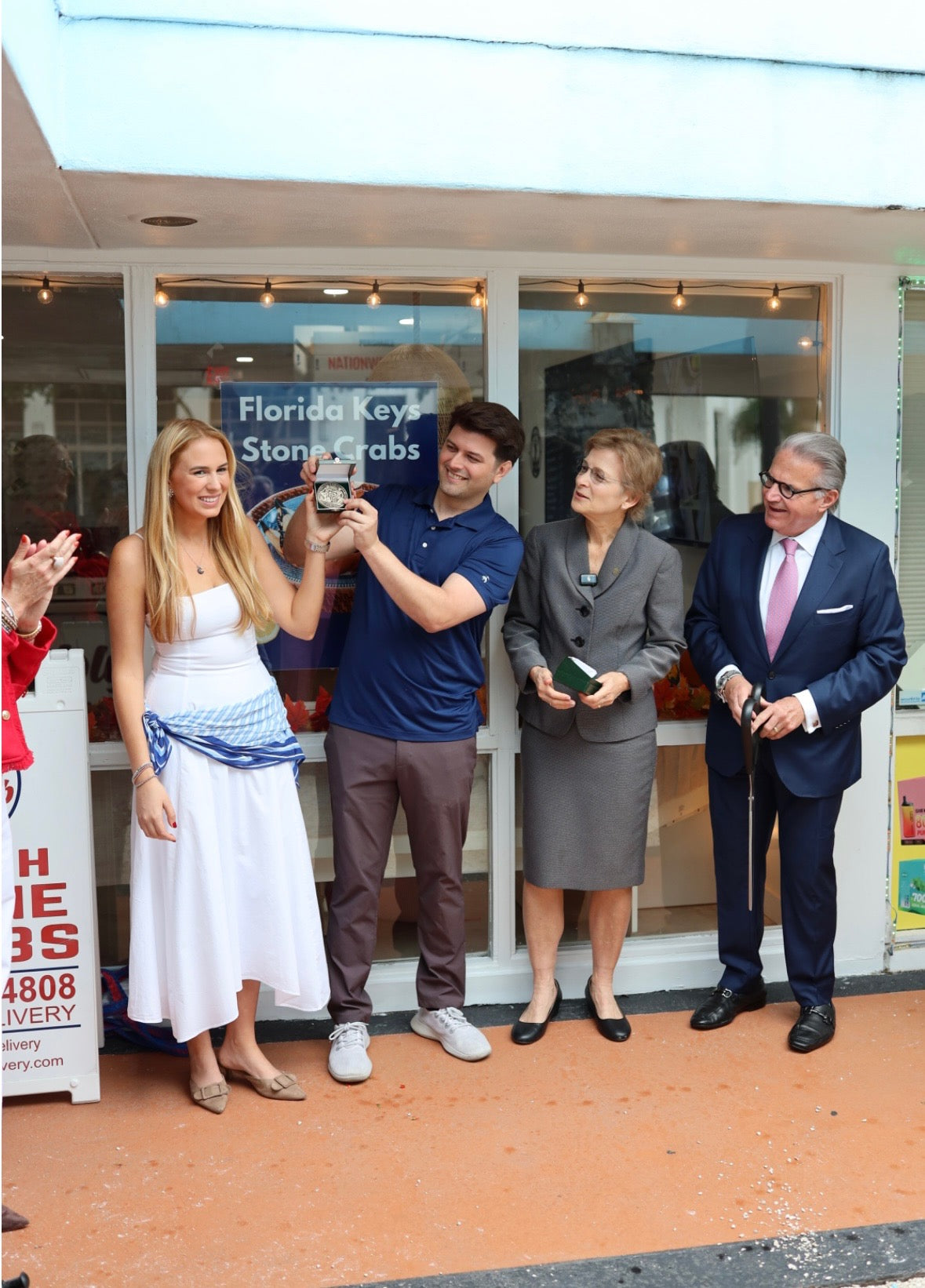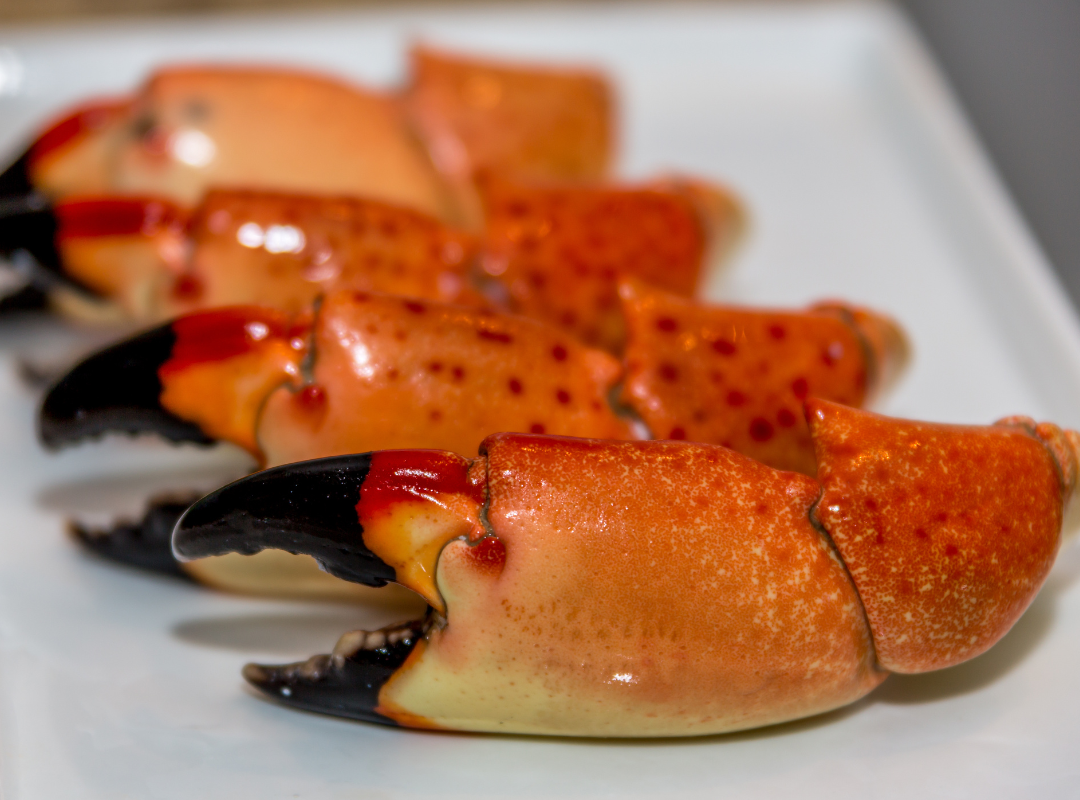
· By Lucas Calderon
10 Fun Facts About Florida Stone Crab
Are you curious to learn more about the fascinating Florida Stone Crab? Well, you’re in for a treat! In this article, we’ll take a deep dive into ten fun facts about this incredible crustacean. Did you know that 98% of stone crabs come from Florida?
That’s right, and we’re fortunate to partner with amazing crabbers in Florida who supply us with delicious, fresh stone crab claws every day.
But that’s not all – we’ll also explore their sustainable source, reproductive power, catching methods, and even some interesting tidbits about their eating habits. Plus, we’ll reveal just how many pounds of fresh Florida stone crab claws we serve to our guests each year. So, sit back, relax, and get ready to satisfy your curiosity about these magnificent creatures.
10 Fun Facts About Florida Stone Crab
Are you ready to dive into the fascinating world of Florida stone crabs? These delicious and sustainable creatures have captured the hearts and taste buds of seafood lovers everywhere. From their scientific name to their unique eating habits, there’s so much to learn and appreciate about these amazing crabs. So, let’s get started!
Fun Fact 1: Menippe mercenaria is the scientific name for Florida stone crab
Did you know that Florida stone crabs are scientifically known as Menippe mercenaria? This name may seem complicated, but it’s a testament to the unique nature of these crabs. From their remarkable ability to regenerate their claws to their sustainable harvesting practices, Florida stone crabs are truly a wonder of the sea.
Fun Fact 2: Two species of stone crabs exist in the Southeastern United States
In the Southeastern United States, you can find two species of stone crabs. Menippe mercenaria can be found in the peninsula of Florida, while Menippe adina is found in the northern and western Gulf of Mexico. These two species may have some differences in their habitats and behaviors, but both offer a delectable seafood experience.

Fun Fact 3: 98% of stone crabs come from Florida
When it comes to stone crabs, Florida is the place to be. In fact, a staggering 98% of stone crabs come from the Sunshine State. This means that when you indulge in a plate of stone crab claws, there’s a high chance that they were harvested off the coast of Florida. So, the next time you savor these succulent claws, remember the hardworking crabbers who bring them to your plate.
Fun Fact 4: Stone crabs are a sustainable source
One of the most remarkable aspects of stone crabs is their sustainability. Crabbers in Florida have implemented strict harvesting practices to ensure that these creatures can continue thriving. When harvesting stone crabs, only the claws are taken, allowing the rest of the crab’s body to remain intact. The claws then regrow, just like a lizard’s tail, preserving the life of the crab and ensuring a sustainable source of delicious seafood.

Fun Fact 5: Only the claws are harvested, and they must be at least 2¾” in length
To maintain the sustainability of stone crabs, strict requirements are in place for harvesting their claws. Only claws that are at least 2¾” in length can be harvested, ensuring that the crab has reached a certain level of maturity. This requirement not only preserves the life of the crab but also ensures that it can fully regenerate its claws to continue feeding and protecting itself.
Fun Fact 6: Female stone crabs can lay up to one million eggs in one sitting
Female stone crabs are incredible reproductive powerhouses. In one sitting, a female stone crab can lay up to one million eggs. This astonishing capability makes crabbers even more protective of female stone crabs. By safeguarding their populations, these crabbers ensure the future generations of this iconic species.
Fun Fact 7: Catching stone crabs
If you’re curious about how stone crabs are caught, they are usually fished near jetties, oyster reefs, or other rocky areas. These habitats provide the perfect environment for stone crabs to thrive. Once caught, their claws are sorted by size, ranging from medium to colossal, offering a variety of options for seafood enthusiasts.
Fun Fact 8: Females live longer than males
When it comes to longevity, female stone crabs have the upper hand. Experts estimate that female stone crabs can live up to eight or nine years, while males live up to seven or eight years. Additionally, males tend to grow bigger than females and have a more variable rate of growth. These differences add to the unique nature of these fascinating creatures.
Fun Fact 9: Stone crabs only have a few predators
Despite their external protection in the form of hard exoskeletons, stone crabs are not invincible. Their primary natural predator is the octopus, which can restrain their claws with its tentacles and bite into their shells with its beak. Other predators of stone crabs include the Florida horse conch, black salmon, sea turtles, groupers, and, unfortunately, humans. These predators remind us of the delicate balance of nature and the need to protect these incredible creatures.
Fun Fact 10: Eating habits of Florida stone crabs
Have you ever wondered what stone crabs prefer to eat? Their dietary preferences include oysters, small mollusks, bristle worms, and other crustaceans. While they occasionally indulge in seagrass and carrion, their preferred meals consist of these delectable treats from the sea. Keep in mind that the meat inside a stone crab claw shrinks until the crab feels secure, indicating the presence of predators or a decrease in visibility. This behavior highlights their cautious nature and the importance of providing a safe environment.
In conclusion, Florida stone crabs are more than just a tasty seafood delicacy – they are an extraordinary example of sustainability and natural wonders. From their unique ability to regenerate claws to their fascinating mating habits, these crabs have captured the hearts of seafood enthusiasts around the world.
So, the next time you savor a plate of Florida stone crab claws, remember the incredible journey of these creatures and the dedication of the crabbers who bring them from the sea to your table.





